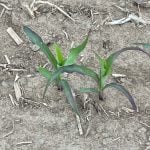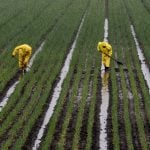Tag Archives phosphorus

Little yield impact from excess phosphorus: study
Ohio State researchers emphasize opportunity for cost savings amidst high input prices

Ontario invests $3 million protecting the Lake Simcoe Watershed
Funding offsets Holland Marsh farmer adoption of innovative phosphorus reduction technology

Making Canada self-sufficient in phosphorus
A proposed project near Hearst could ease this country’s reliance on imports of a diminishing commodity

Database tracks worldwide agricultural phosphorus use
Science Notes: Phosphorus scarcity is a concern for countries with limited reserves

Critical to account for greater nutrient removal from crops
Adequate baseline P and K levels bring savings opportunities, little yield impact, when fertilizer is expensive

Nutrient strategies must reflect Erie watershed’s diversity
Local research and best management practices important to reducing phosphorus movement

Manitoba soil temperatures allow for spring fertilizer
Winter ban lifted, with cautions

More technology tested for phosphorus removal
The latest innovation will filter water at a pumping station, from tile and surface runoff

Extract phosphorus derived from dairy waste water
New technology recycles disappearing essential nutrient to ensure that it doesn’t end up where it isn’t needed

Steel-making byproduct used as field tile filter
Conservation authority hopes to perfect farm-scale system for slag


